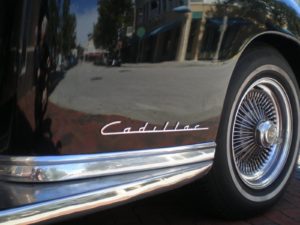It is assumed that China will take us to the cleaners because of their manufacturing prowess. And yes, that is true. I recall hearing the noted Chinese scholar Arthur Waldron speaking of export China in Britain in the 18th century. Even then, the ships came to England packed with these plates and dishware, and went home empty.
But what will really ruin us is the lack of respect for brands. The bankruptcy of General Motors last year was the best example of this I can recall. But if it were not for Buick’s popularity in China, the brand would not have survived at GM.
Americans are good at maintaining top-tier brands, but lately the second tier brands have suffered. Thus GM was incapable of keeping Olds and Pontiac alive. It squandered billions on new ideas like Hummer and Saturn, while valuable brand equity was squandered. Americans think we are masters at branding, but we lose many brands each year through disuse and neglect, what some call brandicide.
 This year, Geely picked up Volvo from Ford. Nanjing bought MG, and SAIC has purchased Rover. These were all struggling Western brands, brands that incompetent Western leadership, both government and business, had ruined. Now, we can argue all day about what Ford should have done with Volvo. Selling it it might be the right course. But the reality is that through various means, great brands are moving overseas.
This year, Geely picked up Volvo from Ford. Nanjing bought MG, and SAIC has purchased Rover. These were all struggling Western brands, brands that incompetent Western leadership, both government and business, had ruined. Now, we can argue all day about what Ford should have done with Volvo. Selling it it might be the right course. But the reality is that through various means, great brands are moving overseas.
The Japanese model is to build its own electronic and automobile/engine brands; very rarely are great brands borrowed. The Chinese have no cultural point to prove. They are out to dominate, and will build their own brands AND redevelop Western ones.
Last year, the Ministry of Culture set out a formal program to revive many of the pre-Mao brands of China. There was no cultural compunction of association with non-communist China. Instead, there was pure recognition of the potential there, as over 16,000 brands were there in 1949, but now only 1,600 remain.
I thought of this last week, when the Financial Times reported that two Chinese state companies would revive old brands, including the limo brand of Madame Mao seen in the above video.
The most notable revival was First Auto Works, which is reviving the Red Flag car brand. Red Flag was a luxury brand launched by Mao in 1958 so China would have a luxury brand, and various historic pictures show premiers in one. The cars have become a subject of nostalgia where “Commie Chic” entrances Chinese and Westerners.
The other notable brand revival is by Shanghai Jahwa, which resurrected Shuang Mei, or two sisters. With a new image Shanghai Vive, the brand is sold at the revived Peace Hotel.
Just as a spoiled teen might run through cars, American companies have gone through and wasted thousands of American brands. Companies cannot figure out how to make them work, and drop them. This came very close to happening with Buick, and but for China, we would have lost that legacy. These brands still have life, but companies often do not see it. But the value is there.
The U.S. has had an advantage over other countries because of its brands. But that is now eroding, and we are coasting on old legacies. Some have written of how China is creating its own new fashion and lifestyle brands. All true, and some might rival Western brands. But things will become quite fascinating as this trend of Chinese ownership of Western brands continues. This won’t be all bad; after all the Chinese understand better than many Westerners that to keep brands authentic, you need to keep a Western presence, however token.
Americans think they are brand leaders because of Nike, Starbucks, Coca-Cola and McDonalds. While these brands are great, they do not make an economy. You need regional brands. Family owned brands. Niche brands. You need lots of brands to make a great economy work.
Brands like Charles of the Ritz and Dorothy Gray, once household names, were lost in corporate shuffles, and largely disappeared, though a few products remain. This is the case with thousands of other U.S. brands. Very often, few noticed. While companies often try to “squat” on dead brands and keep them from others, over the long term you have to use a brand to protect it. In addition, new companies can grab the goodwill of a brand by copying the style and feel of an old brand, and not use the name at all.
In the web analytics my website, I see over and over again where Asian companies are searching for things like “dead American brands to buy” and “old American brands” and such. Entrepreneurs call me too, as they think of ways great American brands could be revived. But very often, the companies don’t listen.
I helped an Asian entrepreneur who proposed to a major U.S. grocery company the revival of one of their old house brands. I need to keep the names private as he still hopes for a deal. Even at no cost, the American food company has not responded to his rather clever proposal. Too much trouble, I guess.
If American companies don’t get it, other countries will. Asian companies know that merely being the sweatshop for American brands is only a short-term strategy, and long term, they can thrive when they own the intellectual legacy of these great Western companies.








Living here in Japan, it is nice to see that some dead or dying American brands still have life in them here. I can find BVD, Munsingwear, McGregor and both Regal and Bostonian shoes. I do have to admit though that the popularity of those brands is waning even here in Japan.